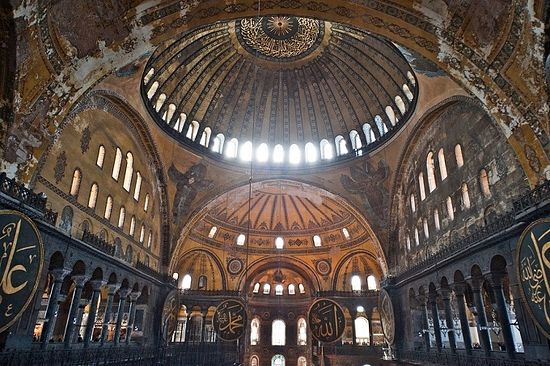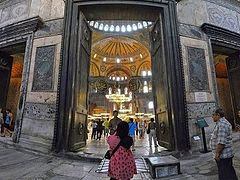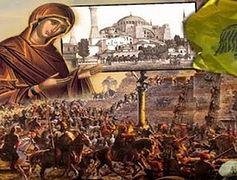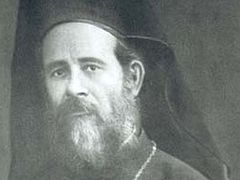Constantinople, December 27, 2017
1480 years ago today, in 537 AD, the grand Hagia Sophia Cathedral in Constantinople was solemnly consecrated.
According to Emperor Justinian I’s design, the church was to become the jewel of the capital city of the Byzantine Empire, and serve as an expression of the empire’s greatness. Up to 10,000 people worked on its construction daily.
“Solomon, I have outdone thee!” St. Justinian declared, according to tradition, upon entering the newly-built cathedral, referencing the great ancient temple built by King Solomon in Israel.
Hagia Sophia remained the largest church in Christendom for more than 1,000 years, until the construction of St. Peter’s in Rome.
On May 29, 1453, the great church was capture by Turks and later converted into a mosque. In 1935, the church was turned into a museum, according to the decree of Ataturk.
A legend has survived about the fate of the holy altar of Hagia Sophia, as reported by Mystagogy:
According to legend, after the fall of Constantinople to the Ottomans in 1453, three Venetian ships fled the city filled with various relics to avoid their capture by the Turks, but the third which carried the Holy Altar of Hagia Sophia, sank into the waters of the Bosphorus in the Marmara region. Since then, in the exact area of the sinking, the sea is always calm and serene, no matter what weather conditions are prevailing in the area. This phenomenon is testified by modern Turkish scientists, who have attempted at various times to discover the cause of this strange phenomenon, but due to the muddy composition of the seabed, their efforts have been fruitless.





